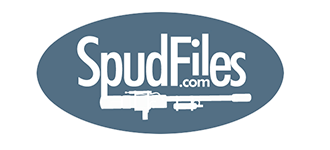Hi folks! I'm new to both spud guns and spudfiles and wanted to thank you all for the wealth of information and help on this forum!
Now to the question. Is it possible to have an HPA source at 3000 psi hooked up to a regulator which down-regulates to approximately 300 psi, which is then hooked up to a QEV with a pilot valve? That would avoid the use of a secondary chamber which is fed by an HPA. Why is a chamber used in the first place instead of just having a high pressure source that is down-regulated? I feel like this would be easier when making a semi-auto design since it avoids having to refill a (relatively) low pressure chamber after every shot. What are the problems with this design that I have failed to take into consideration?
As a safety note, the question is just theoretical. My first spud gun won't be dealing with pressures as high as those posited in the question.
Thanks in advance for your help!
Is it possible to avoid a secondary chamber when using HPA?
- mobile chernobyl
- Corporal 3


- Posts: 758
- Joined: Sun Dec 03, 2006 11:53 am
- Been thanked: 8 times
The problem is - the minimal chamber that exists between your regulator and QEV will quickly drain when the QEV is piloted and then you will be limited to 300PSI at the fastest rate in which your reg can provide. Assuming you're using a reg designed for paintball - that rate is substantially less then a proper QEV valve can dump from a chamber down the barrel. In order to find out your balance of force/reg flow rate - you also need to take into consideration the inertia of the projectile. If your lobbing a heavy arse projectile with a tiny barrel diameter then hey - maybe you won't have any immediate issues associated with the regulators flow.
However - if you're lobbing a lighter projectile with a larger diameter barrel (which is the desired method for spudding because you obtain higher forces on the projectile for a given weight - therefore allowing higher velocities) then as soon at the projectile starts moving, the void behind it will grow very fast - your reg flow rate must meet or exceed that or else your 300psi will quickly drop to much less.
*Note - a chambers pressure is constant normally, so your pressure does drop - it's all just a balance of performance vs. size - and that is where optimization takes place. You need to decide and do some math to calculate the pressure behind the projectile in a step function manner to get an idea of the performance of the gun using no chamber and straight reg connection.
However - if you're lobbing a lighter projectile with a larger diameter barrel (which is the desired method for spudding because you obtain higher forces on the projectile for a given weight - therefore allowing higher velocities) then as soon at the projectile starts moving, the void behind it will grow very fast - your reg flow rate must meet or exceed that or else your 300psi will quickly drop to much less.
*Note - a chambers pressure is constant normally, so your pressure does drop - it's all just a balance of performance vs. size - and that is where optimization takes place. You need to decide and do some math to calculate the pressure behind the projectile in a step function manner to get an idea of the performance of the gun using no chamber and straight reg connection.


